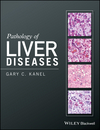Developmental Hepatobiliary Disorders and Cystic Diseases
Abstract
Biliary atresia is one of the most common causes of neonatal liver disease and affects the entire hepatobiliary pathway. Extrahepatic biliary atresia is the most common cause of persistent cholestasis in infants and is responsible for one-third to almost half of all cases of neonatal cholestasis. Developmental and acquired disorders of cystic dilatation of the hepatobiliary system can occur anywhere in the biliary tract. The most common, the choledochal cyst, involves only the extrahepatic bile ducts; however, intrahepatic ducts alone or both intra- and extrahepatic duct abnormalities can also occur in various disorders. Caroli disease shows variable cystic dilatation of the intrahepatic ducts that can mimic polycystic disease on routine imaging. The von Meyenburg complexes are collections of ectatic branching benign biliary ducts that are developmental abnormalities. They are often seen associated with other biliary cystic diseases such as adult polycystic disease but are not uncommon as incidental findings in liver biopsy material.



